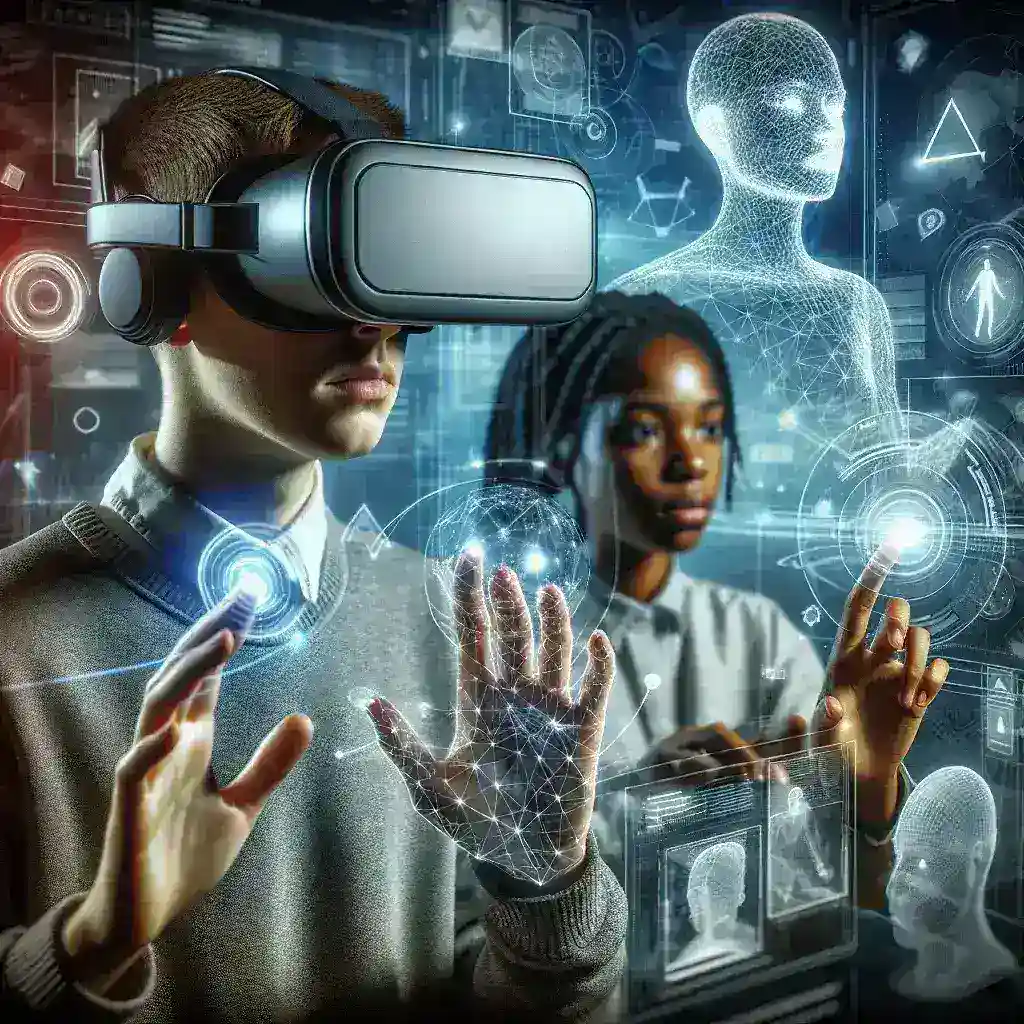Introduction
In the modern workplace, the shift toward remote collaboration has accelerated, driven by the need for flexibility, cost efficiency, and global talent acquisition. As teams become increasingly distributed, the challenge of maintaining effective communication and collaboration has never been more pressing. Enter Virtual Reality (VR): a game-changing technology that is reshaping how we interact and collaborate remotely.
Understanding Virtual Reality
Virtual Reality is a computer-generated environment that can simulate physical presence in real or imagined worlds. VR immerses users in a 3D world, allowing them to explore and interact with that world using specialized equipment such as VR headsets, gloves, and controllers. This capability makes VR uniquely suited for remote collaboration, where physical presence often feels lacking.
The Rise of Remote Collaboration
The demand for remote collaboration tools has surged due to several factors:
- Globalization: Organizations are no longer limited by geography when it comes to hiring talent.
- Cost-effectiveness: Remote teams can help reduce expenses related to office space and utilities.
- Work-life balance: Remote work offers flexibility that attracts top talent.
However, while remote collaboration offers numerous benefits, it also presents unique challenges, including communication barriers, feelings of isolation, and difficulties in team engagement.
The Benefits of Virtual Reality in Remote Collaboration
1. Enhanced Communication
VR can facilitate communication by creating a shared space where team members can interact in real-time, regardless of their physical locations. This immersive experience fosters:
- A sense of presence: Users feel as though they are in the same room, enabling more natural interactions.
- Improved non-verbal cues: Body language and facial expressions can be conveyed more effectively in VR.
2. Creative Collaboration
Virtual Reality enables teams to brainstorm and create together in a virtual environment. This shared space can enhance creativity by allowing participants to visualize ideas and iterate on designs in real-time. Tools like virtual whiteboards and 3D modeling software can be integrated into VR environments.
3. Training and Simulation
VR is particularly valuable for training scenarios, providing a risk-free environment for employees to learn and practice skills. Remote training sessions in VR can be utilized for:
- Technical training: Engineers can practice complex procedures without the risk of damaging equipment.
- Interpersonal skills: Employees can engage in realistic scenarios to improve communication and conflict resolution skills.
4. Team Building
One of the significant challenges of remote work is fostering a strong team culture. VR experiences, such as virtual team-building exercises, allow teams to form connections beyond traditional video calls. Activities like virtual escape rooms or collaborative experiences promote collaboration and fun.
Challenges to Consider
1. Technical Barriers
While VR technology has advanced significantly, not all teams may have access to the necessary hardware and software. Investing in VR equipment can be a barrier for smaller companies or teams operating with limited budgets.
2. User Experience Issues
Not all users may feel comfortable using VR. New technologies can come with a learning curve, and some individuals may experience discomfort in immersive environments. Companies will need to invest in training and resources to ensure a positive user experience.
Case Studies: Success Stories of VR in Remote Collaboration
1. Distributed Software Development Teams
A global software development company implemented VR environments for daily stand-up meetings and project planning sessions. By creating virtual meeting rooms, developers could present their work and receive feedback in a more engaging format, leading to increased productivity and better outcomes.
2. Architectural Firms
Architectural firms are using VR to conduct remote design reviews with clients. Instead of sending 2D plans, architects can create immersive 3D walkthroughs that allow clients to experience the design intent before construction begins. This has led to more informed decisions and reduced revisions.
Future Prospects of Virtual Reality in Remote Collaboration
The future of VR in remote collaboration looks promising. As technology continues to evolve, we can expect:
- Increased accessibility: As hardware becomes more affordable and widespread, more teams will utilize VR.
- Integration with other technologies: VR may be combined with Augmented Reality (AR) and Artificial Intelligence (AI) to create even more robust collaborative tools.
- Enhanced social experiences: New platforms are emerging that prioritize social interaction in virtual environments, making remote collaboration feel more personal.
Conclusion
Virtual Reality is poised to transform remote collaboration, offering innovative solutions to the challenges faced by distributed teams. By enabling enhanced communication, creativity, and training, VR can foster a stronger sense of presence and connection among team members. As organizations continue to adapt to remote work, investing in VR could be a strategic move that positions them at the forefront of collaboration technology.

